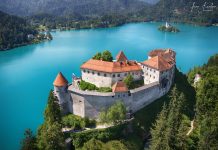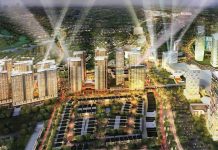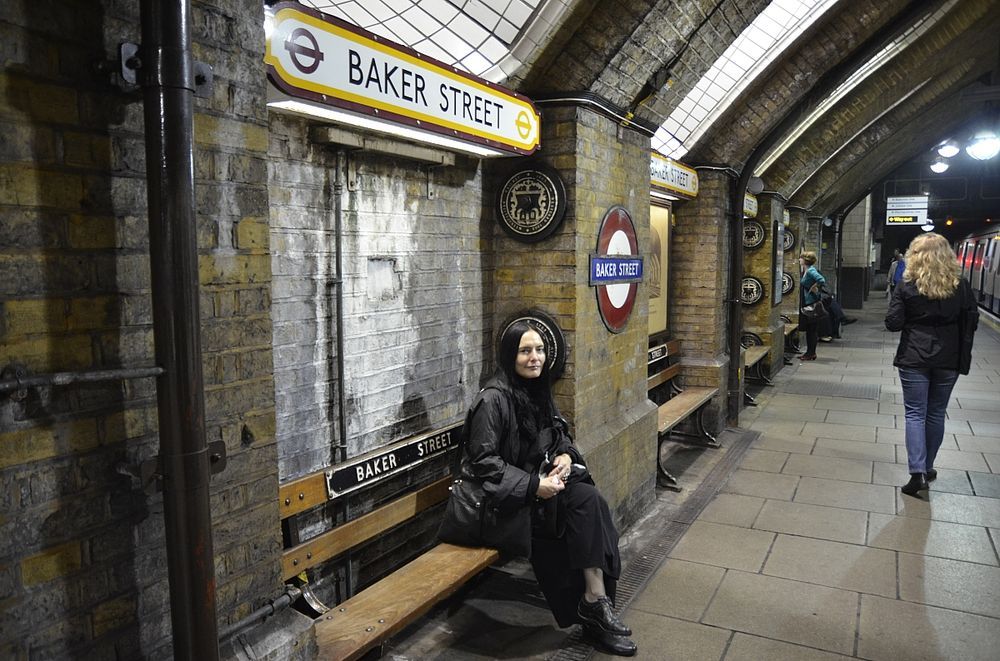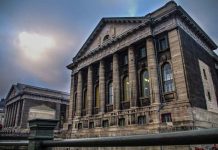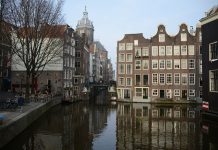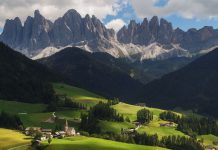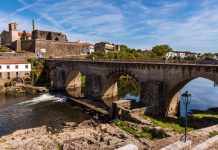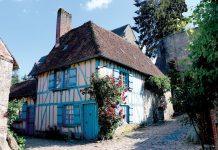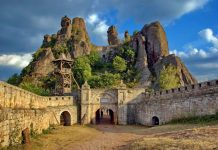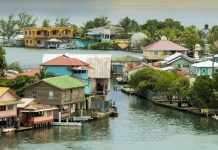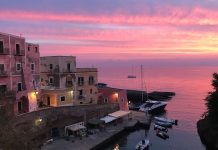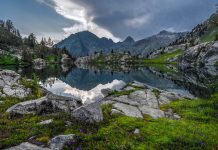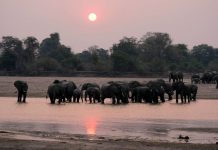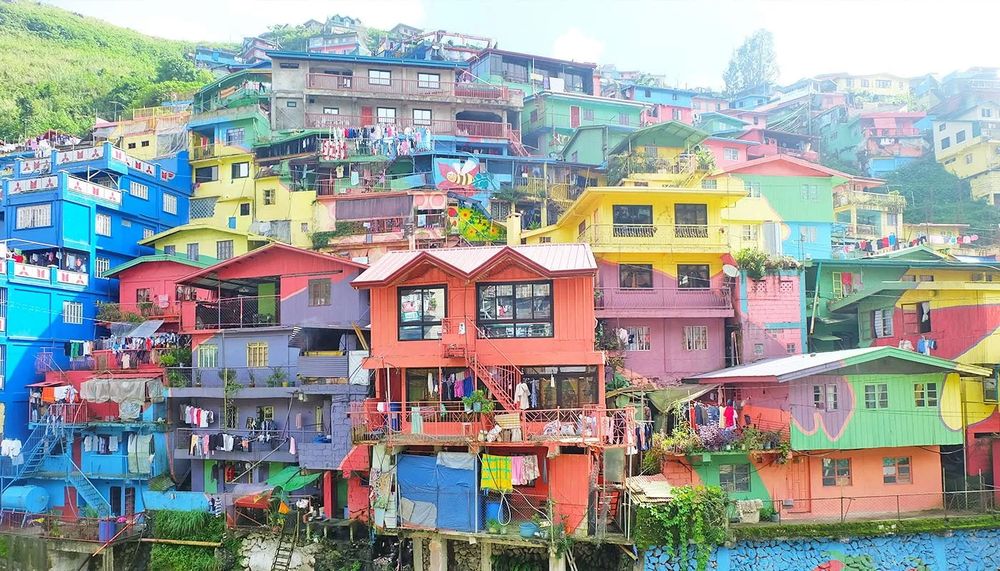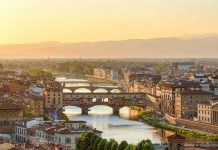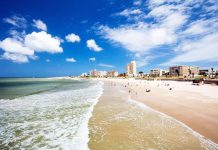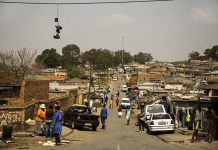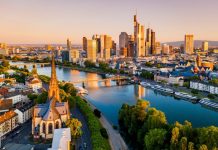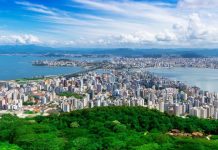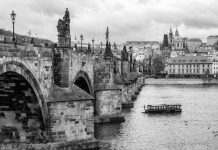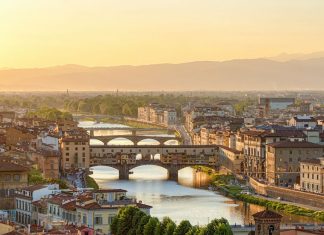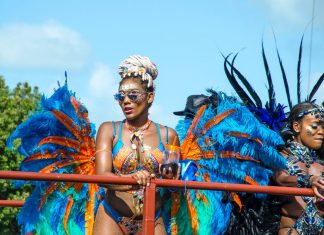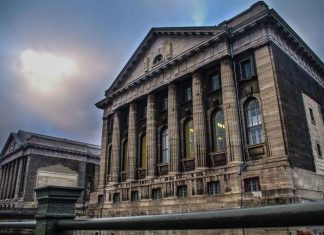Baguio is the gateway to the wonders of Northern Luzon. The calm beaches of La Union; the fabled Hundred Islands of Pangasinan; the world famous Banaue Rice Terraces in Ifugao; the ancient churches, Spanish influenced houses, historical and cultural relics of Ilocos Sur and Ilocos Norte, the Kabayan mummy caves of benguet; and the distinct culture and colorful traditions of the tribes of Benguet, Mountain Province, Ifugao, Kalinga, Apayao and Abra.
1. Marker of the Philippine Commission’s First Session in Baguio
This is the site of the building where the members of the Philippine Commission met from April 22 to June 11, 1904 and officially initiated the use of Baguio as the Philippine Summer Capital.
The Commission was composed of Governor General Luke Wright, president, and Commissioners Henry Ide, Den C. Worcester, T. Padre Tavera, benito Legarda, Jose de Luzuriaga, James Smith and Cameron Forbes.
To celebrate the 75th Anniversary of Baguio a project was done to locate, clean and spruce up all historical markers. So the marker was fenced off and signboards were made.
2. Kennon Road and its builder
Named after Col. Lyman W. Kennon who was the final builder of the famous benguet road, with the help of the industrious Cordilleras and foreign workers.
Kennon road is the shortest and the most scenic highway linking Baguio and the lowlands. The Lion’s head can be found along the way.
Final construction of this road was finished in 1903. Col. L. Kennon first ascended to Baguio in 1905.
Of the original workers, the Igorots and Japanese were admired for their trustworthiness and willingness to work.
Kennon was closed to traffic after the July 16, 1990 earthquake. It is now open to light vehicles.
3. Diplomat Hotel on Dominican Hill
In May 1911, the councils of the Province of the Dominican Order voted to construct a vacation house in Baguio on a 17 hectare property they had acquired when the American authorities were encouraging people to come here. Actual work started in 1913 under Fr. Roque Ruano and the building was inaugurated on May 23, 1915. To take advantage of the tax exemptions a school called Collegio del Santissimo Rosario was opened in June 1915 but due to the very small enrollment the school closed in 1917, reverting the building to the original vacation house sanitarium.
During WWII it was first occupied by refugees. Later the Japanese Army Liberation Forces had to bomb out the refugees from the buildings. The five direct hits left very extensive damage and for a time it was left unrepaired. Reconstruction was started in 1947 and completed in 1948 with most of its pre-war grandeur and beauty restored.
In 1973, Diplomats Hotels, Inc. acquired ownership, remodeled the interior into a 33 bedroom hotel with modern facilities, but retained the unique and distinct personality of the Dominican Hill. In the 80’s the hotel ceased operations due to the death of one of its majority stockholders. Plans are underway to develop this historical religious landmark into a tourist resort.
4. Philippine Military Academy
The Philippine Commission promulgated Act No. 175 which became the basis for the creation of the Philippine Constabulary in August 8, 1905. The school for the officers of the constabulary was first located in Sta. Lucia Barracks in Manila. Later in 1908, it was relocated in Baguio on the site known as Constabulary Hill later renamed Camp Henry T. Allen, in honor of the first chief of the Philippine Constabulary.
With the passage of the Jones Law, the school was later changed to Academy for officers of the Philippine Constabulary with a two-year curriculum. In 1908, the course was raised to collegiate level and later lenghtened to three years with class 1938 as having the lease graduates of that course.
When the commonwealth government was established in 1935, the Philippine Military Academy was created in place of the Philippine Constabulary Academy. Under the National Defense Act, the PMA was authorized to maintain a cadet strength of 350. Because of increased population, the academy transferred to Teachers Camp in June 1936 where it remained until WWII broke out.
After the war the PMA headquarters was temporarily relocated at Camp Murphy and later at Alabang, while Camp Allen was being rehabilitated. In April 1947 the PMA was back to its original home in Camp Allen.
Again they had to transfer to Loakan because of overcrowding. Since May 1950 the Philippine Military Academy has found its permanent home at Fort del Pilar, Loakan, Baguio City.
5. The Mansion
This imposing and majestic Baguio mansion house has a long list of Filipino presidents and American governor-generals. It has elegantly structured building and guesthouse. It’s gate is patterned after that of London’s Buckingham Palace. The Mansion has also been the site of several international conferences and a working office of the President of the Philippines during his visits to the City.
6. Camp John Hay
This former American recreational facility is currently undergoing development as a world class resort.
7. Teachers Camp
It was through the vacation normal school which began in Teacher’s Camp 1908, that not only teachers from all over the islands were able to have a respite and some more time for studies, but the city became nationally popularized.
In a letter to the Secretary of Public Instruction, Governor William Pack outlines his plan to set up a camp in Baguio where teachers can be accommodated. The plan was approved on January 8, 1908 and the camp was opened on April 6, 1908.
For a start, four assembly tents were put up for kitchen, dining and storage purposes and two other large tents were set aside for class purposes. Later on, the KURSAAK was constructed in 1909 as a permanent structure and took over the functions of the mess tent, aside from being the social center for assemblies. The next year, other buildings were added, the road traversing the vast hectarage leveled and the athletic field out in its hollow.
In 1912, Benitez Hall , Ladies Hall, the Secretary’s Cottage, the Under-Secretary’s Cottage the Director and the Assistant’s Cottages were built. Several more appropriations were passed to construct the Teacher’s Hall, the Tavera Hall and the White Hall in 1927. In 1937, General Luna Hall was built by the Philippine Military Academy.
It now caters to conferences, meetings seminars and social functions sponsored by the government sector.
CULTURAL
1. Easter Weaving Room
This school was built in 1905 under Samuel Drury with funds donated by Bishop Brent of the Episcopalian Church of the Philippines. It opened in 1906 as a church school with eight homesick malaria-infested Igorot students one of whom was the famous Dr. Hilary Clapp. In 1909Deaconess Hargreaves admitted girls but it was during the administration of Dr. Benjamin Platt that Easter School Weaving Room was started as industrial work in the curriculum. By 1924 there were five buildings and in 1928 they inaugurated the Chapel of the Holy Innocents. Before World War II the Easter School Compound which had nine buildings were razed to the ground by the American Liberation Forces. With only the headquarters and the Nurses cottages standing, then rehabilitation started to complete the compound as it is now. It is the right place to visit for those who are interested in native fabrics and other handicrafts. Her one can witness the actual process of cloth weaving as practiced by the natives of the mountain provinces for ages. The basic material for woven products can be bought in an adjunct of the Easter School established in 1908 by the Philippine Episcopalian Church.
2. St. Louis Filigree Shop
A handicraft shop specializing in silver jewelry and other filigree products. Some of the craftsmen are only high school students. The shop is in the center of the city and was established in 1916.
3. Baguio Tourism Complex
Within the complex along Gov. Pack Road are the Baguio Sunshine Park, the Regional Office of the Department of Tourism and Secretary’s guest house. The Sunshine Park features flowering gardens piped in music and covered stage with ethnic designs which is often used for cultural presentations. The park itself is designed after a shield.
4. Baguio-Mountain Provinces Museum
This museum was temporarily located in Camp John Hay following the collapse of the building during the 1990 earthquake was established by a group of concerned citizens to preserve the cultural heritage of the Cordilleras. It had on display a variety of artifacts and relics showcases the cultural heritage, customs and traditions of the mountain provinces. The cluster of buildings within the complex depicts the architectural feature of the native houses of the mountain provinces. There is now a plan to reconstruct this at the old site within the Tourism Complex. Hopefully it will be completed and opened by 1998.
5. Baguio Convention Center
Situated across the University of the Philippines exudes an ethnic flavor, considered the most modern and spacious edifice North of Manila, the BCC initially gained prominence when it became the site of 1978 internationally renowned chess championship series between Anatoly Karpov and Victor Korchnoi. It was inaugurated by former Pres. Ferdinand Marcos on July 7, 1978 during the opening of the series. It continues to cater to conferences, conventions, meetings and other social functions in the City.
6. Educational Institutions
There are six (6) colleges and universities in Baguio. These are the University of the Philippines College, University of Baguio, Saint Louis University, Baguio Colleges Foundation, Baguio Central University and Brent International School.
7. SLU Museum
Located in the premise of the school (SLU), it showcase the different culture heritage’s of the Cordilleras and some lowland amenities. Artifacts and relics including an ancient coffin can be seen on display. A curator is always stationed for the convenience of visitors to explain the artifacts and the culture of the Cordilleras.
8. Ifugao Woodcarvers Village
Along the way to Asin, about 5 kms. From the city, is an Ifugao wood carving village which produces and sells beautiful hand-carved items at very low prices.
NATURAL
1.Asin Hot Spring
Located 16 kilometers northwest of Baguio. The resort’s main feature is a swimming pool surrounded by thermal springs, lush vegetation and several hanging bridges. It is an ideal respite. This is now eyed to be redeveloped into a Tourism resort along with the adjoining tourist attractions of Tuba and Baguio.
2. Mt. Sto. Tomas
A trek up to the Mount Sto. Tomas is a hikers delight. The peak is 7,500 feet high and commands a majestic view mountain sea and valley. The mountain can be reached by foot or by vehicle.
RELIGIOUS
1. Lourdes Grotto
This is religious shrine housing the image of the Lady of Lourdes. About 252 steps lead to this shrine where pilgrims brave the steep climb to offer sacrifices, devotions and prayers. One is also regarded with a beautiful panoramic view of the city.
2. Baguio Cathedral
One of the familiar landmarks in Baguio. The structure with its twin sires and one hundred steps sits on top of a hill in the heart of the city, offering church goers and visitors a chance to get a birds eye view of the entire commercial hub. It was opened to the public last November 25, 1990 during the Christ the King celebration.
3. Bell Church
This cluster of temples is located on the border of Baguio City and Trinidad Valley. Its exotic oriental architecture, pagoda roof, ornate gateway, dragon ornaments and Buddha guarded windows gaze from a top a hill. The Bell Temple priest practices mixture of Buddhism, Taoism, Confucianism, and Christianity. One may even try having his fortune told.
4. Churches, Seminars and Convents
Baguio is an ideal location for meditation, contemplation and spiritual renewal hence the existence of no less religious denominations that run churches, seminaries, convents and other institutions such as hospitals and schools.
MAN-MADE
1. Burnham Park
It is the oldest of all Baguio Parks. One can unwind from the tension of the day-to-day bustle of biking, skating or simply reflecting on the day’s experiences amid a soothing garden backdrop of colorful flowers.
It is thickly wooded and is a great place to have picnics and concerts. There are tennis and basketball courts, athletic oval and an orchidarium.
2. Botanical Garden
It is also called the Igorot village which features native hut typical of Cordilleras architecture. This village within a village captures the ethnic spirit and cultural legacy of the Igorot dweller.
3. Mines View Park
Appropriately named for its breathtaking view of mountain ranges and Baguio’s mineral bowl where gold, silver and other curio items.
4. Wright Park
It is sometimes mistakenly called Ride Park by some who identify this pine tree park reserve for its kiddy horse rides. A long stairway leads to the Pool of the Pines, a 100 meter long pool of water lined on both sides by the famous Baguio towering pine.
5. Baguio Country Club
This club was organized with funds which were privately contributed. They built tennis courts and cottages.
Today Baguio Country Club has 182 guest rooms and suites in a new building. It also boasts a beautiful 18-hole golf course for its members and guests.
6. Session Road / Market
The first Commissioner came to Baguio on horses from Bauang up to a place which is now called Sablan. With their horses they went down the mountain trails to the valley of Trinidad and to Baguio. In Baguio City teetered their horses at the water trough which is still intact at its original site until 1984 when it was demolished to give way to the Diamond (75th) Jubilee marker right in the confluence of Session Road and the roads going to Pines Hotel, YMCA and Teachers Camp. During the early years of Baguio, Session Road was occupied by buildings only on the left side opposite the hill on which the church was built. The lowest portion of the road was crossed by a big stream spanned by wooden bridge. Beyond this bridge was the swampland where bullcarts parked and congregated thereby starting what is now called the market. Many of the open air stalls spreads out towards Lucban following the banks of the steam and thus determined the direction of the market expansion.
7. Pine Tree of the World Park
This park is a collection of several varieties of pine tree species from all over the world. A ceremonial planting was done on July 22, 1997 with the President, Fidel V. Ramos and Ambassadors of donor countries planting pine trees themselves.
This park is a recreational area and is conceived to become a research center for pine tree study in Asia.
This encompasses the Tower of Peace monument which was build by the Lionism Movement which was dedicated for world peace and understanding.

